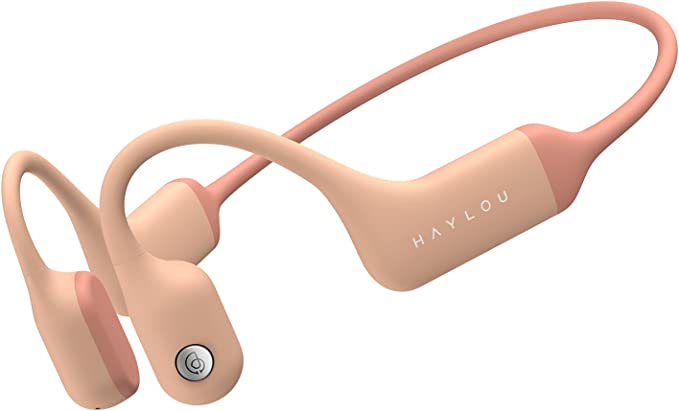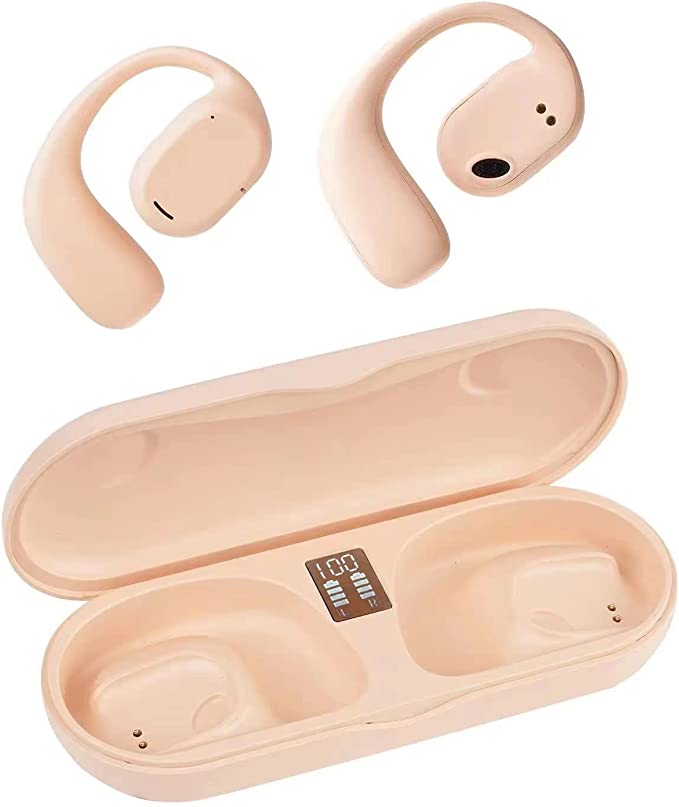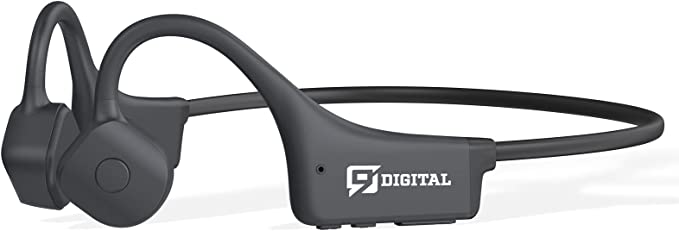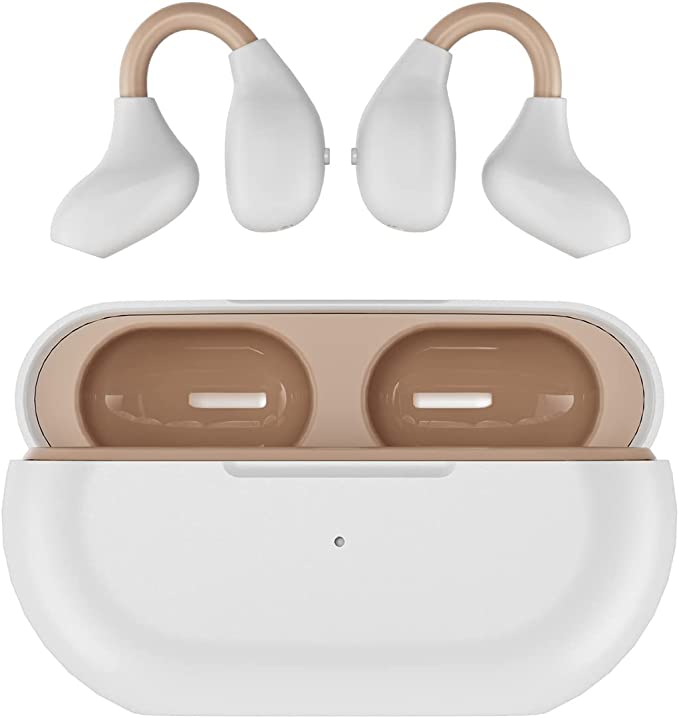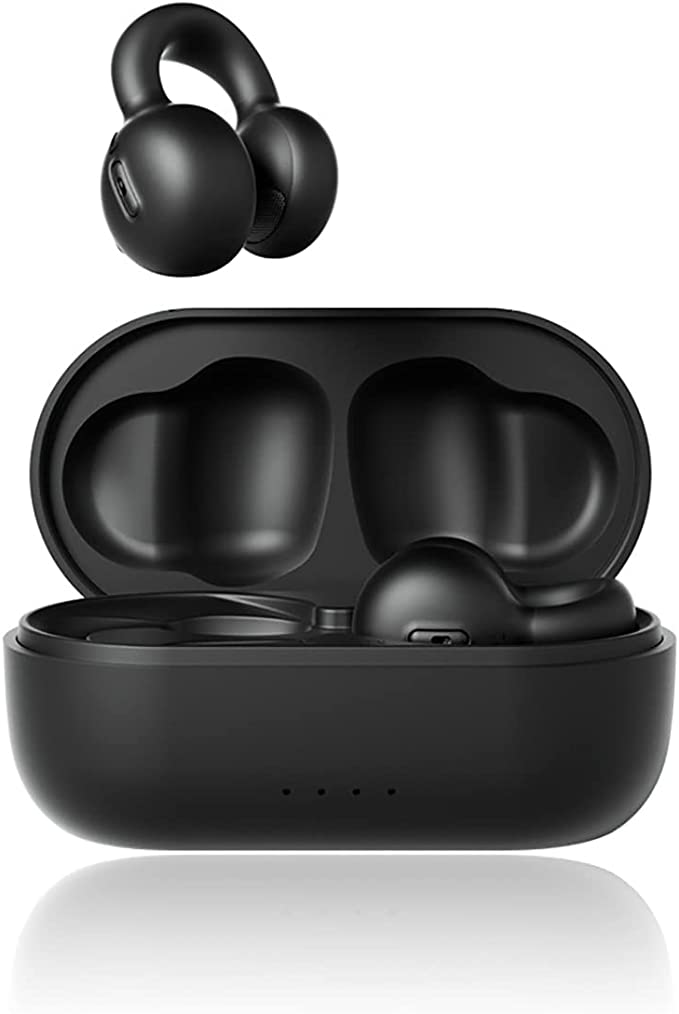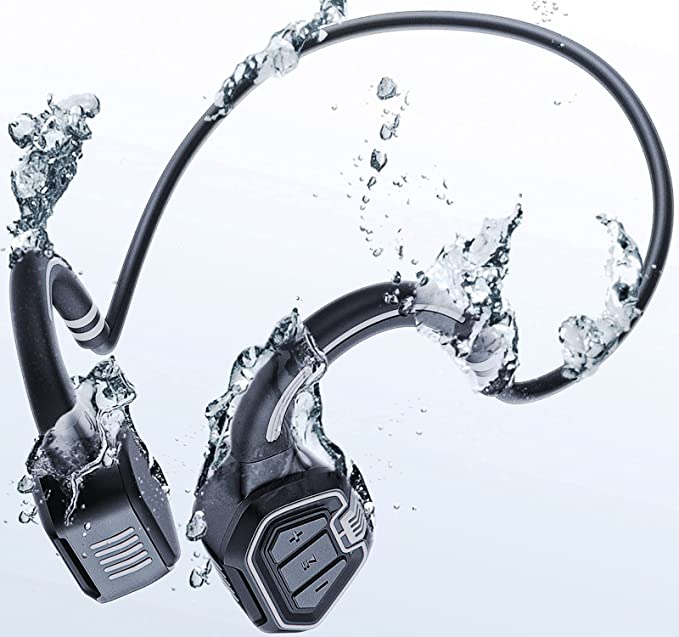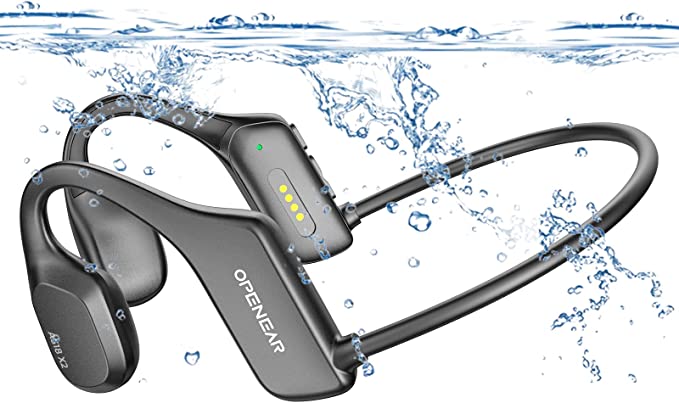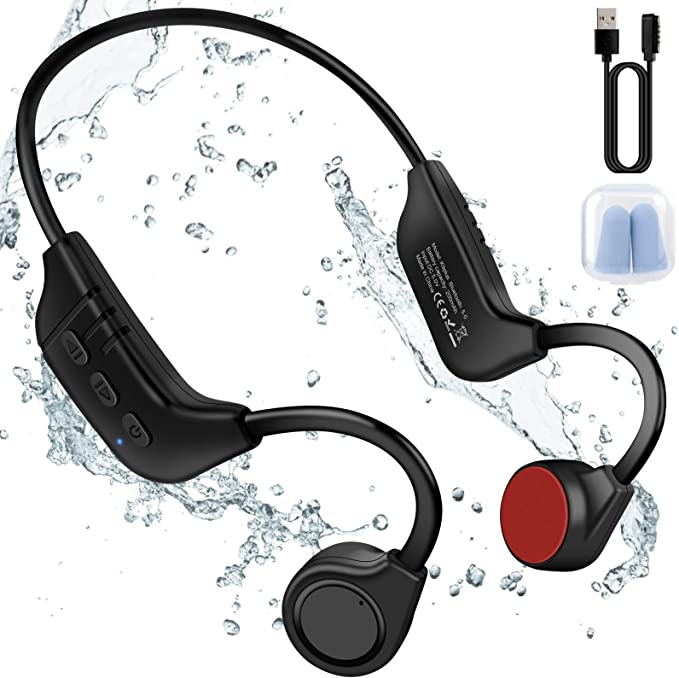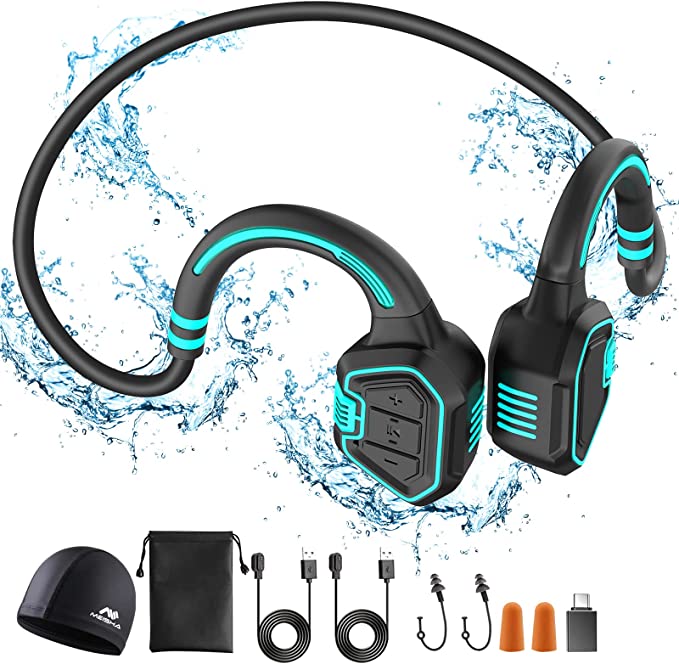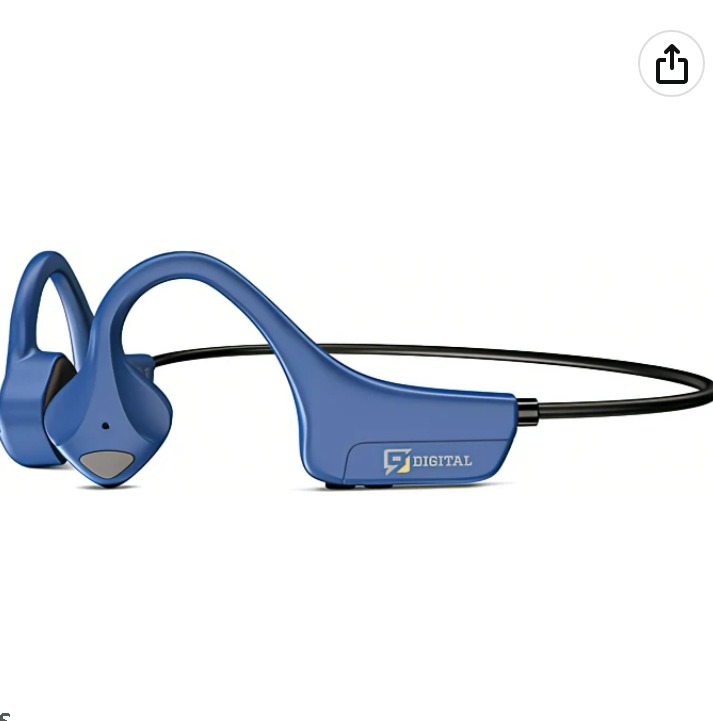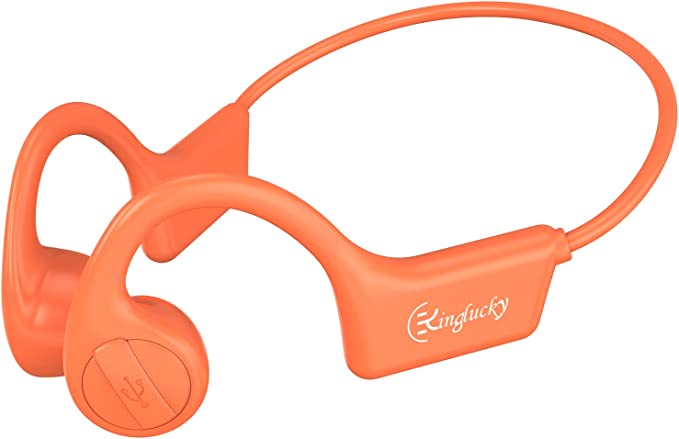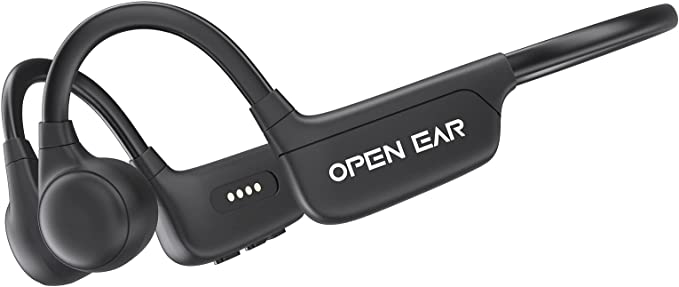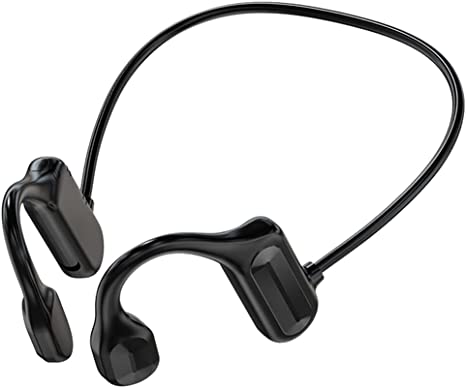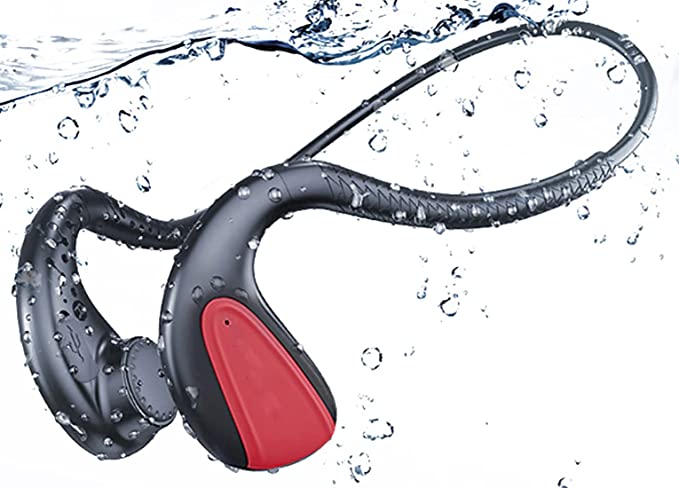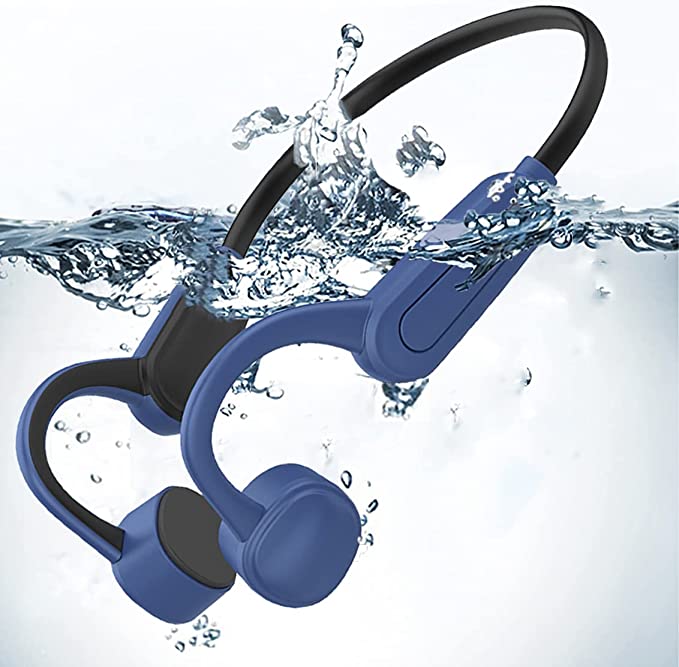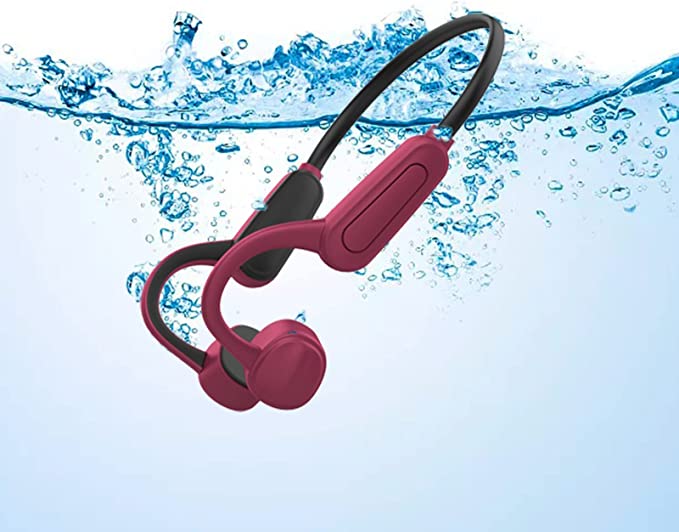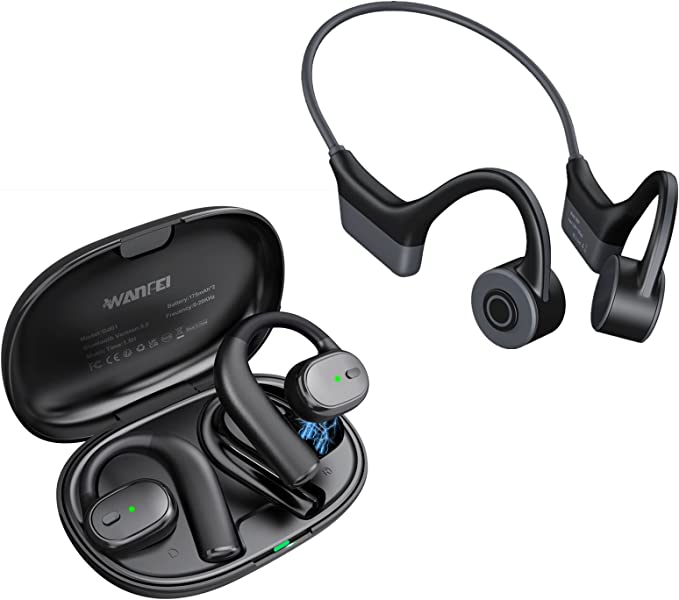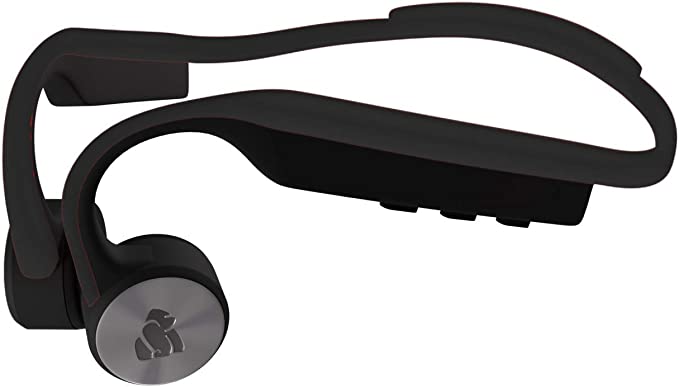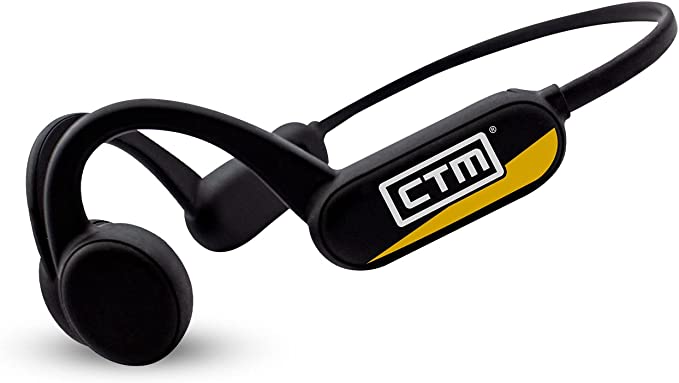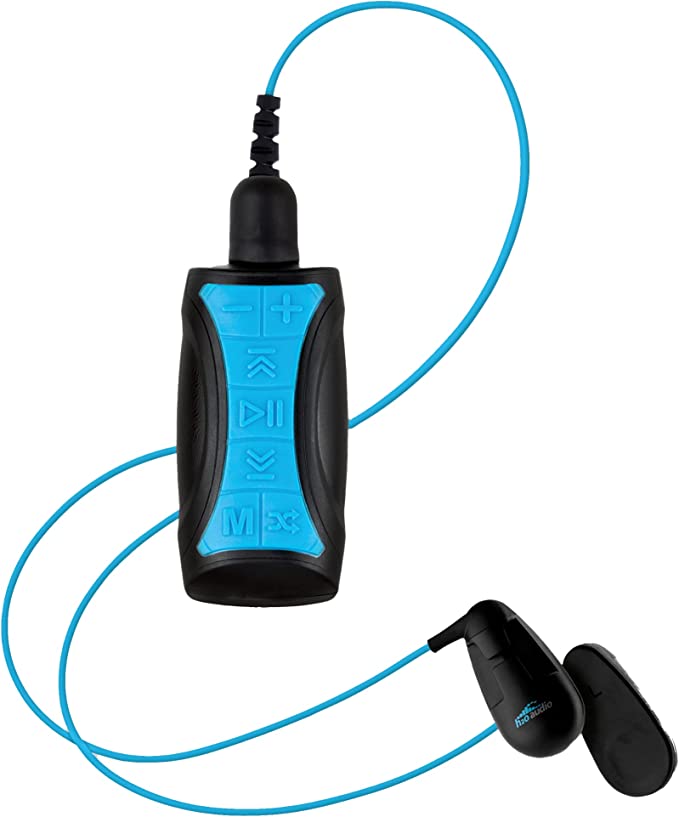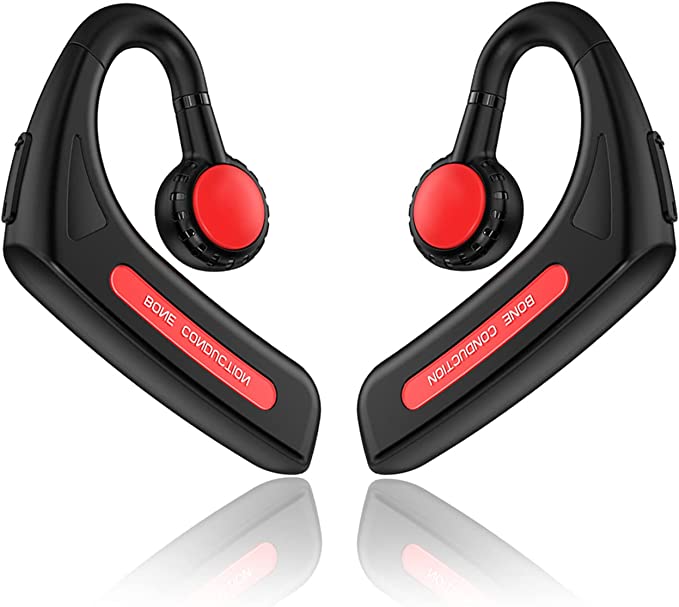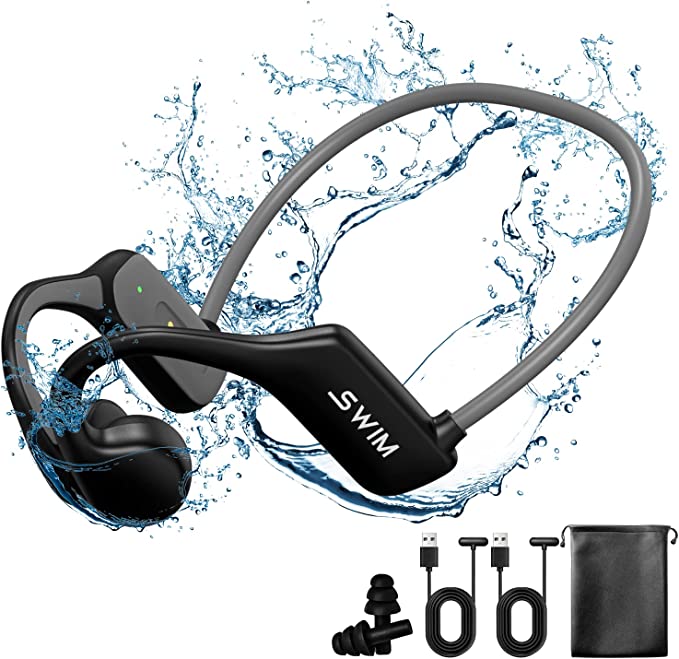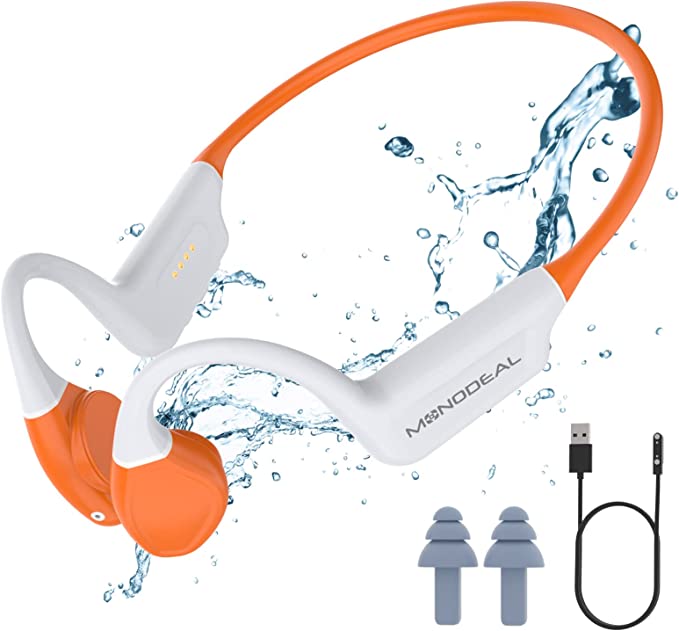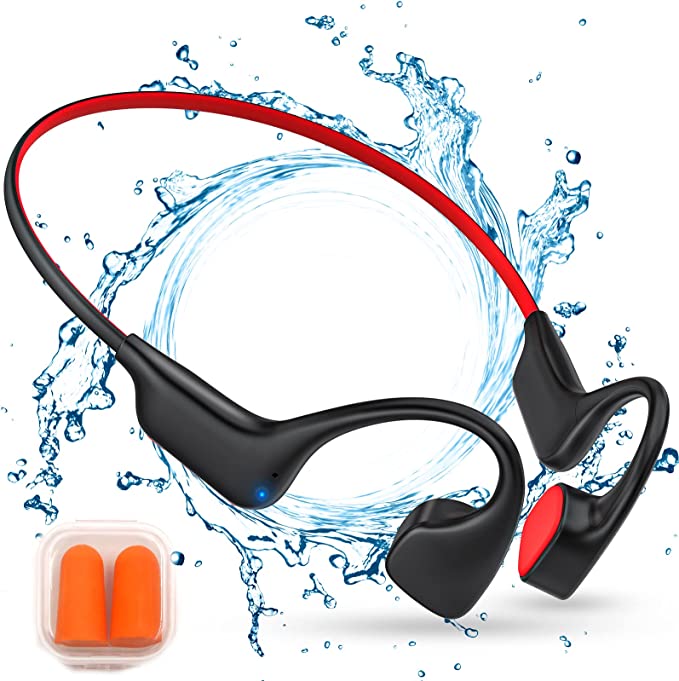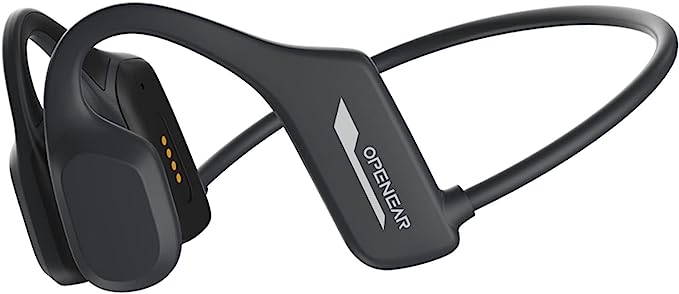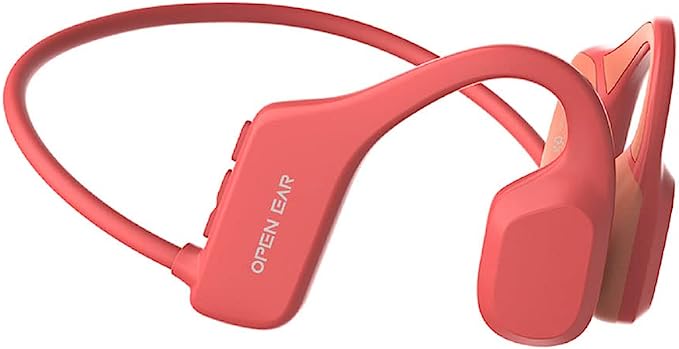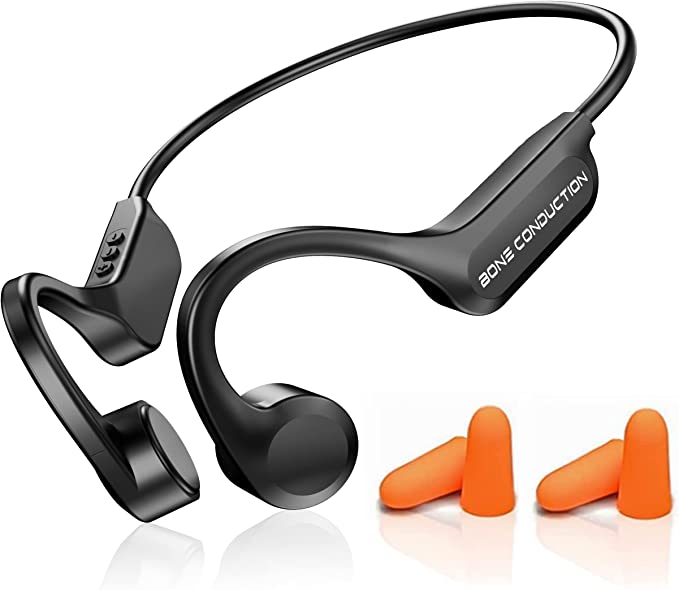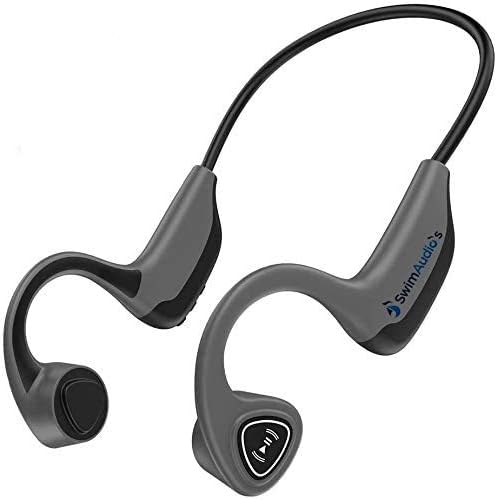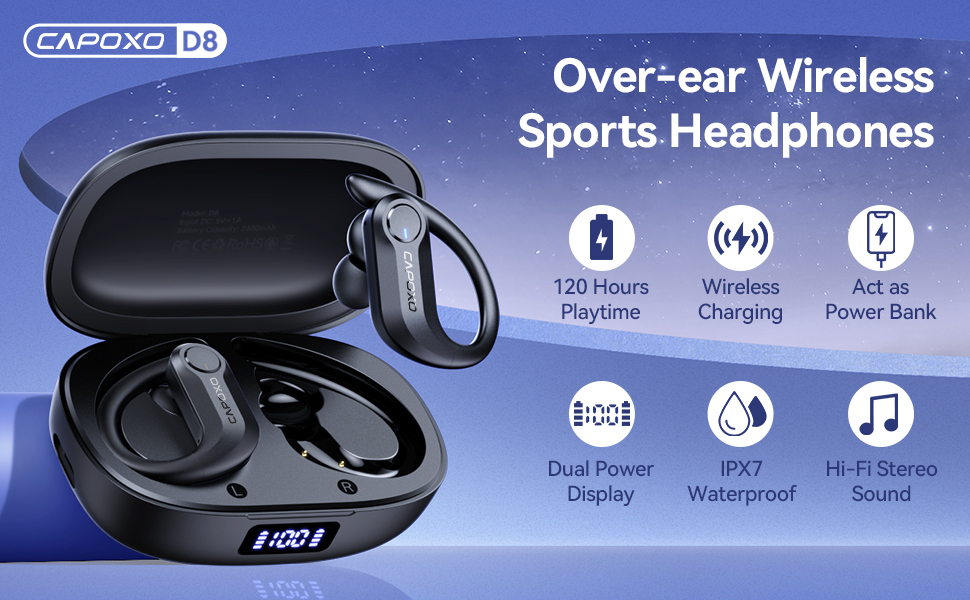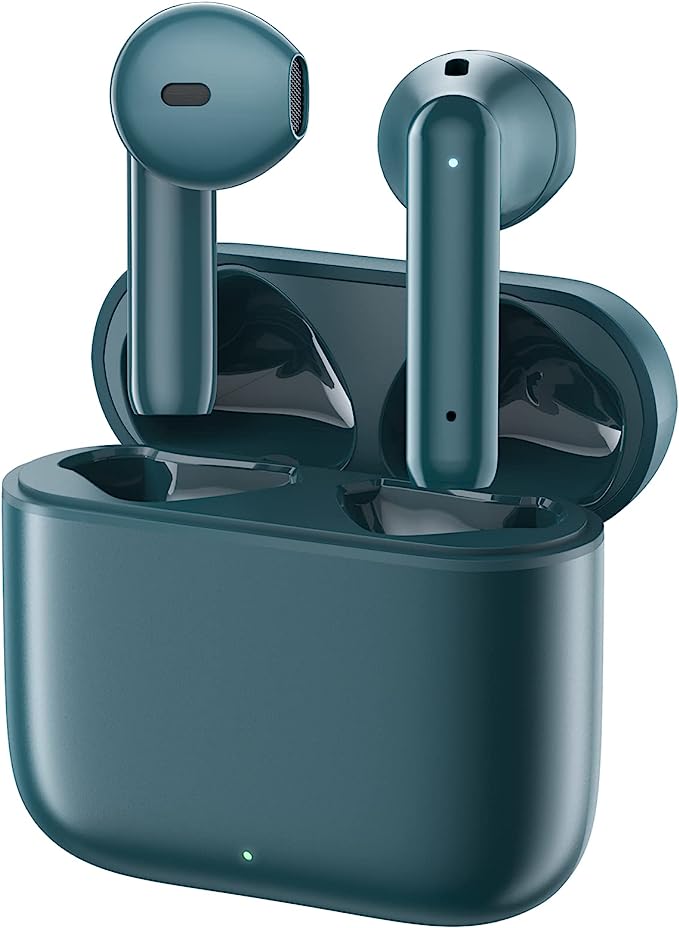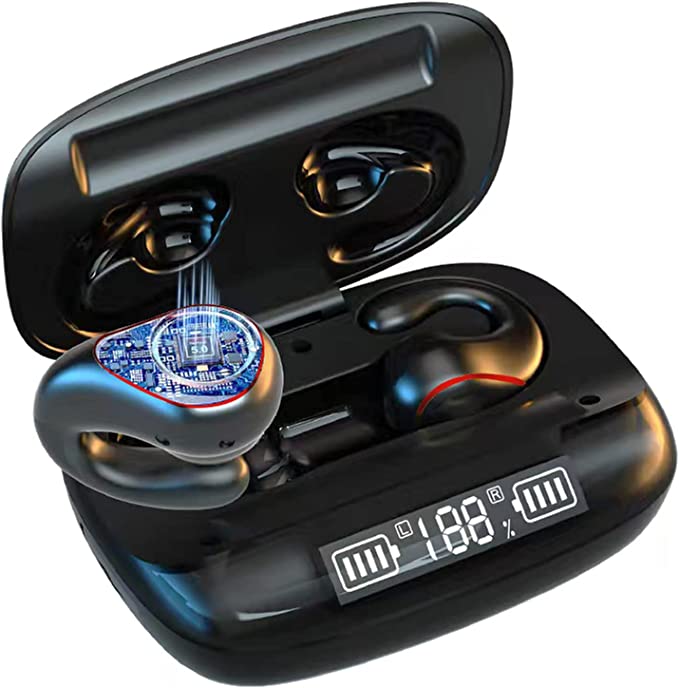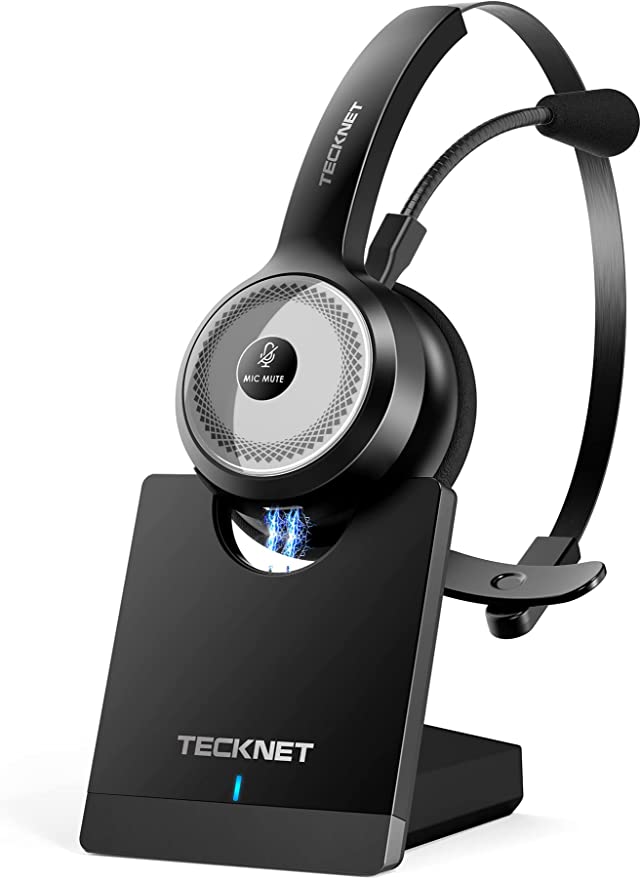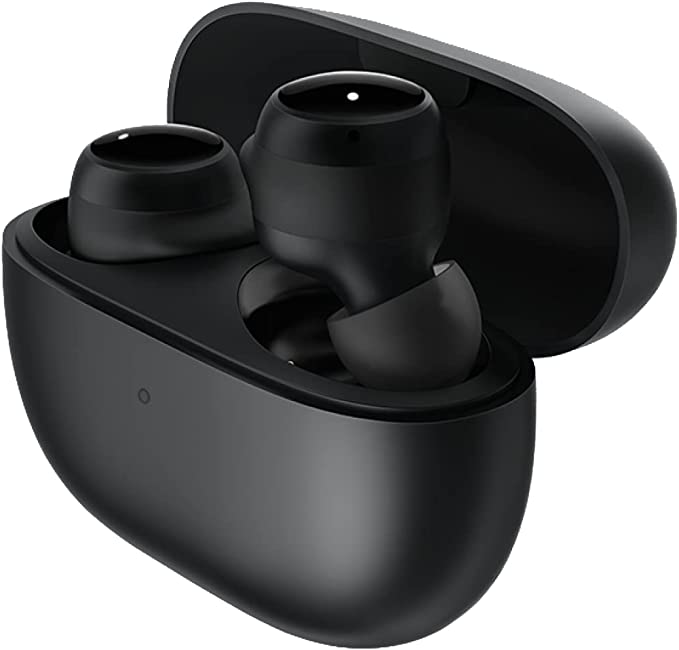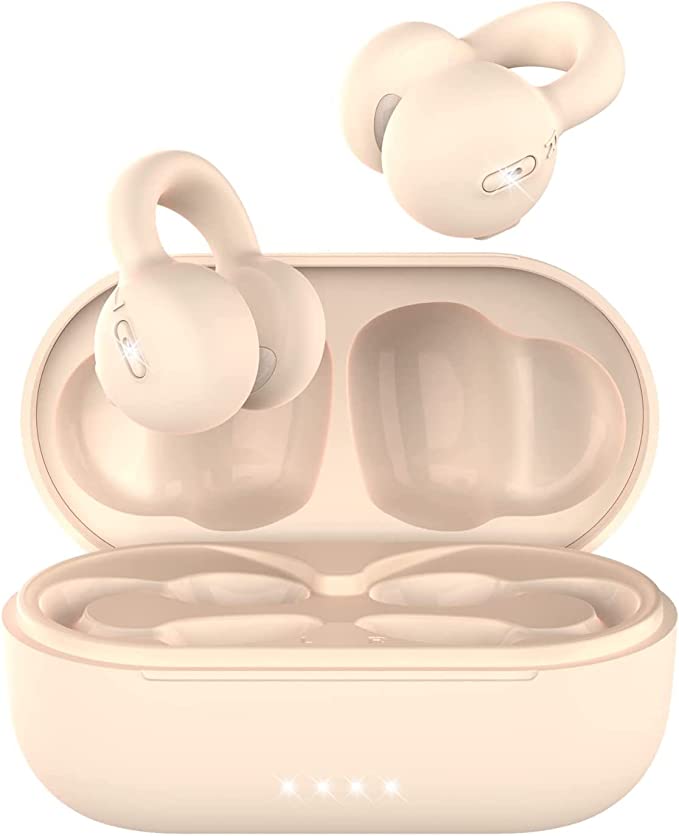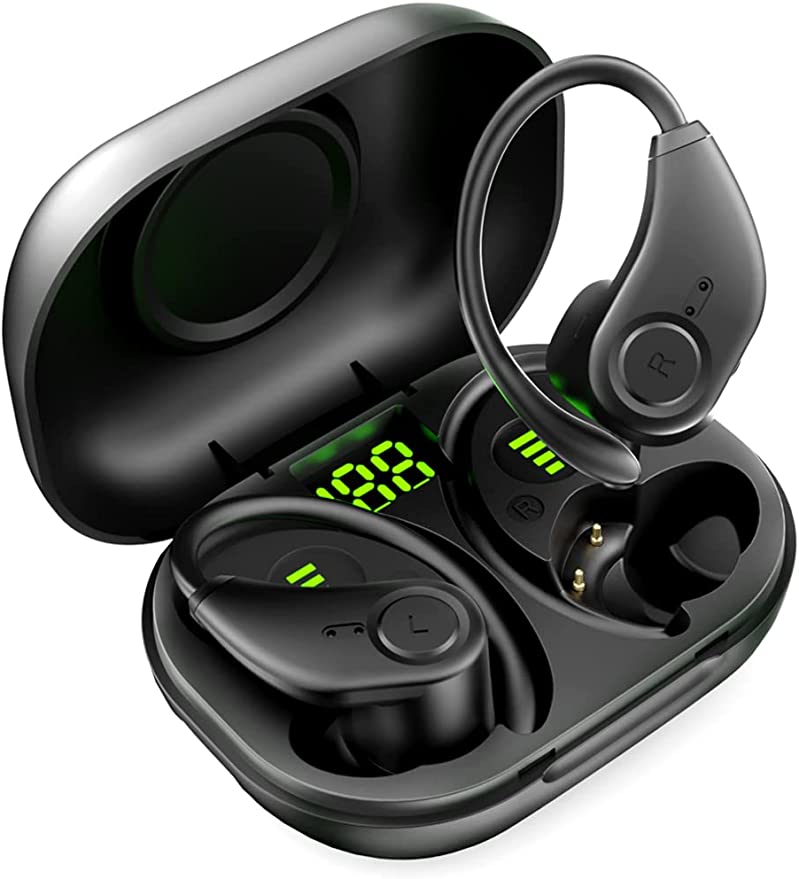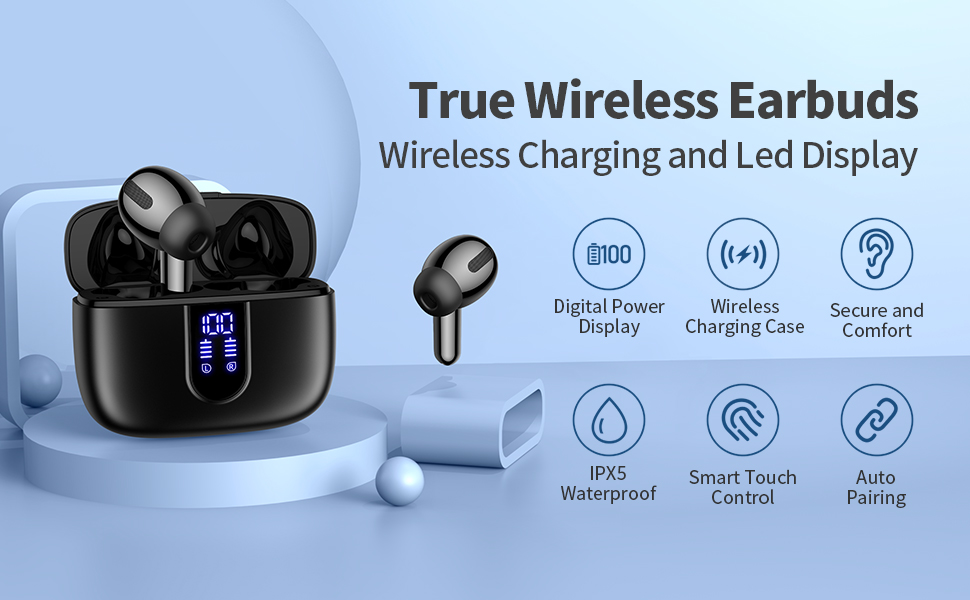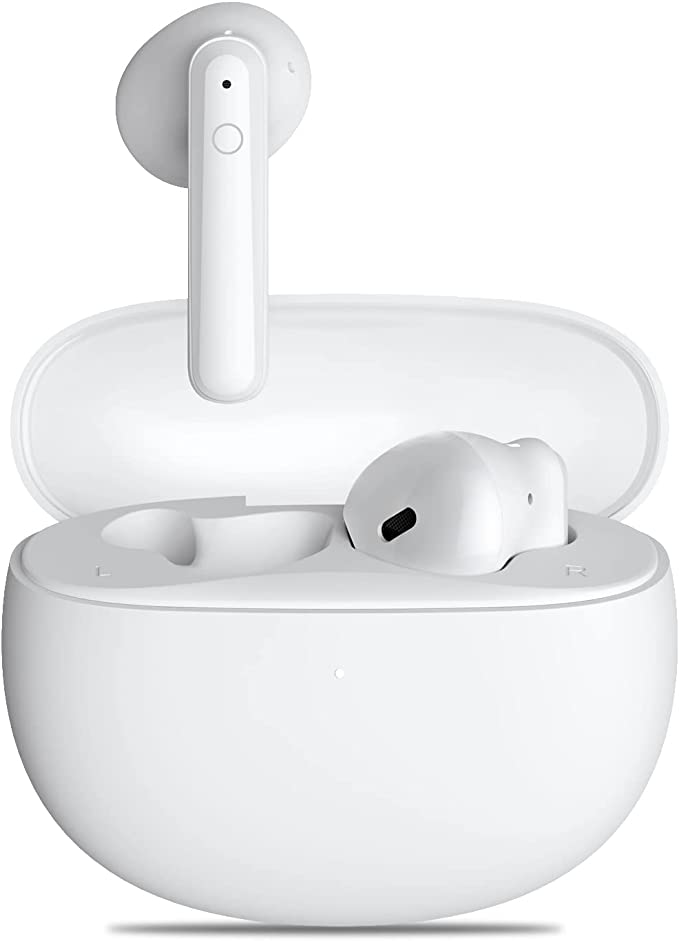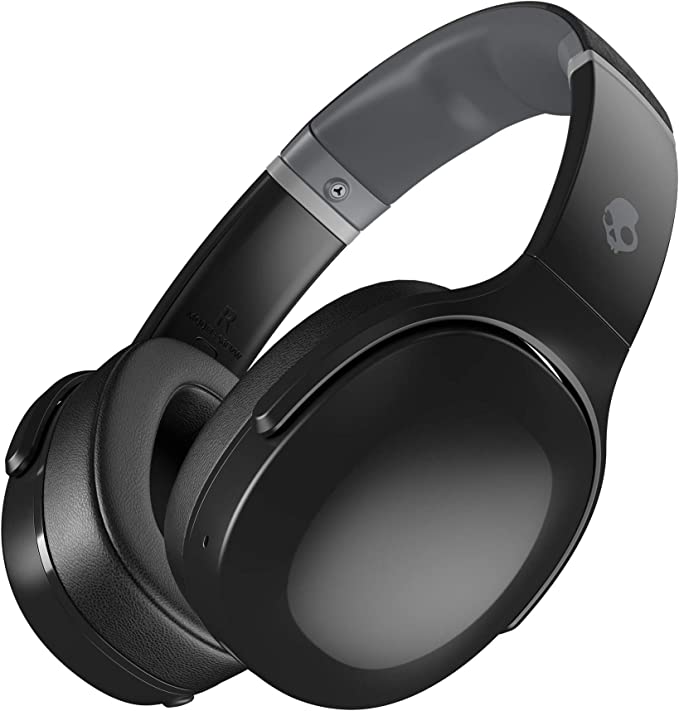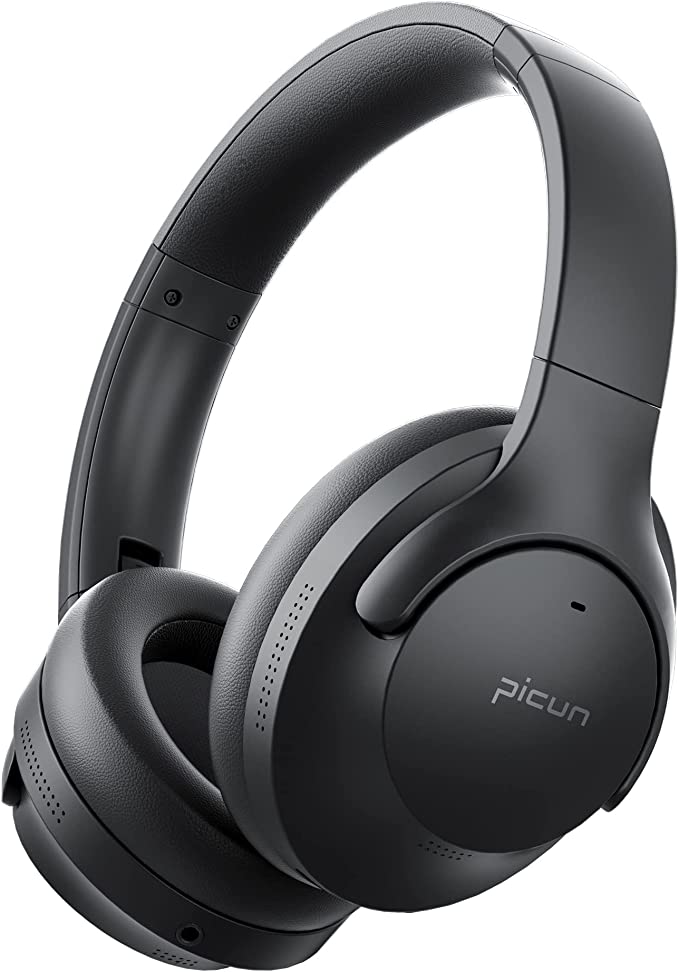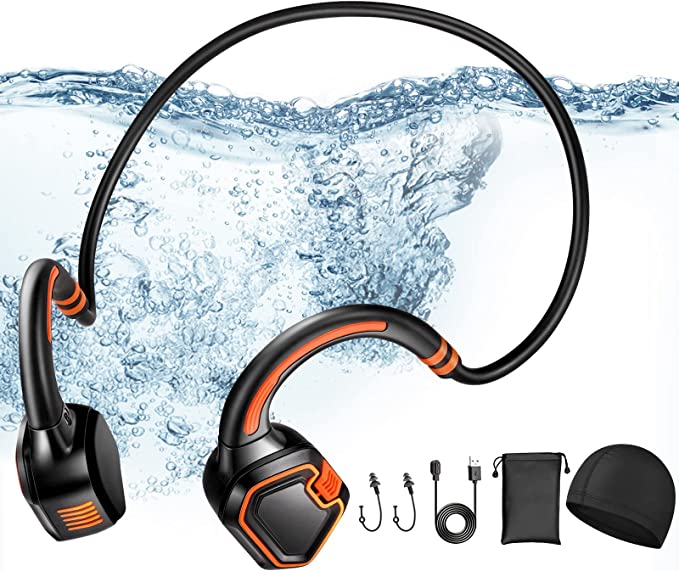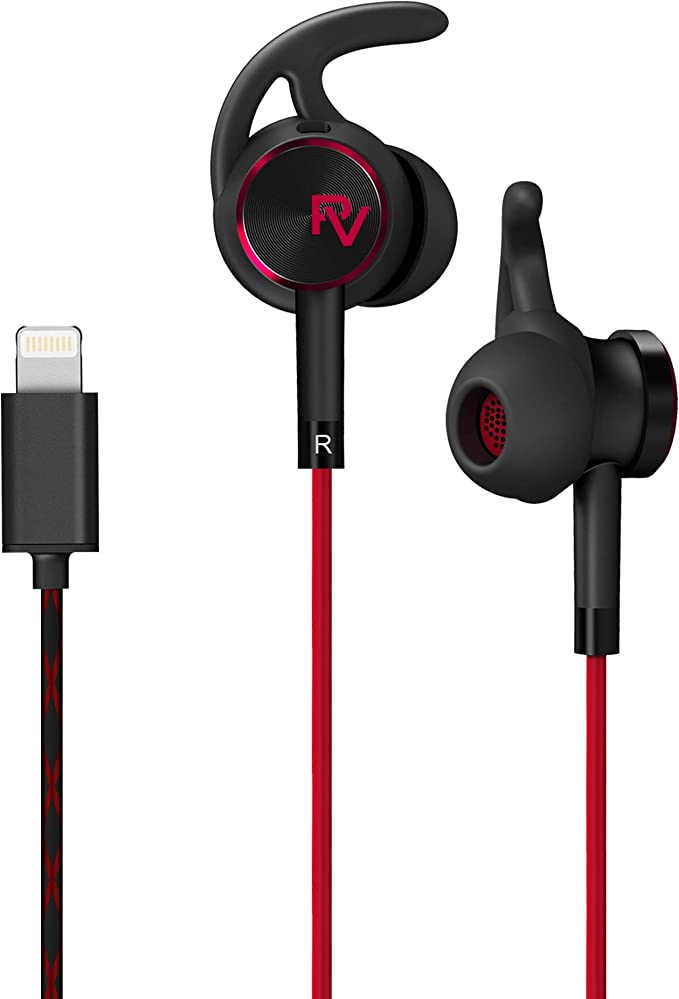PRIVCUST Bone Conduction Headphones: The Science of Hearing Through Vibrations & Open-Ear Freedom
Update on May 29, 2025, 11:56 a.m.
We live in a world saturated with sound, a constant symphony of an urban clamor, whispered conversations, the rustle of leaves, and, of course, the curated soundtracks of our lives delivered through personal audio devices. For years, the quest for immersive audio often meant sealing ourselves off, cocooning our ears to dive deep into music or podcasts. But what if there was a way to hear our personal audio an\<em>d\</em> the world around us, simultaneously? This isn’t a futuristic fantasy, but a fascinating reality made possible by bone conduction technology, a method of hearing that feels almost primal, yet is ingeniously harnessed in modern devices like the PRIVCUST Bone Conduction Headphones. This exploration isn’t just about a pair of headphones; it’s about rediscovering a fundamental way sound interacts with our very being.

A Different Drum: The Science and Whispers of Bone Conduction
To understand bone conduction, we first need to appreciate how we typically hear. The most common pathway is air conduction. Sound waves travel through the air, into our ear canal, causing the eardrum to vibrate. These vibrations are then amplified by tiny bones in the middle ear (the ossicles) and transmitted to the fluid-filled cochlea in the inner ear. Within the cochlea, delicate hair cells convert these mechanical vibrations into electrical signals that our brain interprets as sound. It’s an intricate and marvelous biological machine.
Bone conduction, however, offers an alternative route. Instead of sound waves traveling through the ear canal, it relies on vibrations transmitted directly through the bones of our skull – typically the cheekbones (zygomatic bones) or the temporal bones – to the inner ear, effectively bypassing the eardrum and middle ear. Imagine a faint whisper carried not by the wind, but by the earth beneath your feet. The principle is similar; the medium of transmission changes from air to solid.
This isn’t a new discovery. Anecdotes suggest that Ludwig van Beethoven, as his hearing progressively failed, would bite down on a metal rod attached to his piano, allowing the instrument’s vibrations to travel through his jawbone to his inner ear, enabling him to “hear” and compose some of his most profound works. While perhaps embellished over time, this story beautifully illustrates the essence of bone conduction. More concretely, this technology has been a cornerstone in specialized hearing aids for decades, particularly for individuals with conductive hearing loss (where the outer or middle ear’s ability to transmit sound is impaired). These devices prove that our bones can indeed be conduits for sound.
The PRIVCUST Bone Conduction Headphones are a contemporary manifestation of this principle. They don’t sit inside or cover your ears. Instead, small transducers rest gently on your cheekbones, just in front of your ears. When you play music or take a call, these transducers convert electrical audio signals into subtle mechanical vibrations. These vibrations travel through your cheekbones, directly stimulating the cochlea. The result? You hear the audio clearly, while your ear canals remain completely open.

The Open-Ear Paradigm: Advantages and Acoustic Nuances
The most immediate and celebrated benefit of this open-ear design is enhanced situational awareness. Picture yourself cycling on a busy city street, jogging through a park, or even working in a bustling office. With traditional headphones, you’re often isolated, potentially missing crucial auditory cues like an approaching car, a colleague calling your name, or the simple, pleasant sounds of nature. Bone conduction headphones, by leaving your ears unobstructed, allow these ambient sounds to reach your eardrums naturally. This creates a blended auditory experience, keeping you connected to your environment, which is not just a convenience but a significant safety advantage in many scenarios. It fosters a sense of presence that immersive, isolating headphones simply cannot offer.
Comfort is another compelling argument. Many users find in-ear buds uncomfortable or irritating after prolonged use, leading to pressure or ear fatigue. Over-ear headphones, while often comfortable, can be bulky and warm. Bone conduction headphones, by their very design, alleviate these issues. There’s nothing inserted into the ear canal and no cups pressing against the ears. This makes them an excellent option for extended wear, whether it’s for a long work-from-home day, an endurance workout, or for professional drivers, like truckers, who need to stay connected and comfortable for hours on end. For individuals with sensitive ears or those prone to ear infections from earbuds, this open design can be a revelation.
However, it’s important to approach bone conduction with an understanding of its unique acoustic characteristics. The sound quality, while clear and perfectly adequate for a wide range of audio content including music, podcasts, and calls, can differ from what you might expect from high-fidelity traditional headphones. Bass frequencies (low notes), for instance, often feel less punchy or resonant. This is partly because deep bass perception is often enhanced by the sealed air chamber an earbud creates or the large air displacement of over-ear drivers. With bone conduction, the experience of bass is more of a direct, felt vibration. It’s not necessarily “worse,” but it is different—an audio signature tailored for awareness and comfort, perhaps over sheer acoustic depth for the audiophile.
Another consideration is sound leakage. Because the transducers create sound through vibration, some of this vibrational energy can be transferred to the air around the headphones, especially at higher volumes. This means that someone sitting very close to you in a quiet environment might be able to hear a faint whisper of your audio. While the PRIVCUST product information mentions a “sealed design” to minimize this, the physics of bone conduction inherently involve some degree of sound emanation. It’s a trade-off for the open-ear experience.

PRIVCUST in Detail: Engineering for an Aware and Active Life
Let’s delve into the specific features of the PRIVCUST Bone Conduction Headphones and the science that makes them tick, moving beyond just the core bone conduction mechanism.
Ergonomics and Resilience: Designed for the Demands of Motion
The physical design of any wearable technology is crucial for its adoption, and PRIVCUST has paid attention to this. The headphones feature a lightweight, on-ear form factor that inherently avoids occluding the ear. A key element is the 180-degree rotatable earpieces, coupled with what the product describes as “soft adhesive ear hooks.” From an ergonomic perspective, this adjustability is vital. Human anatomy varies significantly; the ability to rotate the earpieces allows for a more personalized fit against the cheekbones and around the ear, accommodating different head shapes and sizes. The “soft adhesive” nature of the ear hooks (likely a pliable, skin-friendly silicone or TPE material) aims to achieve two things: a secure grip that prevents the headphones from dislodging during vigorous activity, and a gentle contact point that distributes pressure evenly, minimizing discomfort over long periods. Think of it as a custom embrace for your head, firm enough to stay put, gentle enough to forget it’s there.
Then there’s the resilience factor, quantified by the IPX5 water resistance rating. The “IP” stands for Ingress Protection, a globally recognized standard (IEC 60529) that classifies the degree of protection an enclosure provides against intrusion from solid objects and liquids. In “IPX5”:
- The “X” signifies that the device’s protection against solid particle (dust) ingress hasn’t been specifically tested or rated by the manufacturer for this particular model. It doesn’t mean no protection, but rather that it’s not a claimed feature under this specific rating.
- The “5” is the crucial part for liquid resistance. It indicates that the headphones are protected against low-pressure water jets from any direction. Imagine a light rain shower or the spray from a water bottle; the IPX5 rating suggests the internal electronics are shielded from such exposure. This makes the PRIVCUST headphones a reliable companion for sweaty workouts, runs in drizzling rain, or just daily use where accidental splashes might occur. It’s an assurance that a bit of moisture won’t silence your soundtrack. This level of protection is achieved through careful sealing of seams, buttons, and charging ports, often using gaskets and water-repellent coatings on internal components – a small marvel of material science and engineering in a compact device.

The Wireless Heartbeat: Bluetooth 5.2 and Dual-Microphone Clarity
At the core of any modern wireless headset is its Bluetooth capability. The PRIVCUST headphones employ Bluetooth 5.2. To appreciate this, let’s briefly consider Bluetooth’s evolution. This short-range wireless technology, managed by the Bluetooth Special Interest Group (SIG), has seen numerous iterations since its inception in the late 1990s, each bringing improvements. Bluetooth 5.2, a relatively recent standard, offers several key advantages pertinent to audio devices:
- Enhanced Stability and Efficiency: It generally provides more robust and reliable connections, less susceptible to interference, and boasts lower energy consumption compared to older versions. This translates to fewer dropouts and longer battery life for the headset.
- Improved Data Handling: While not always fully exploited by all devices, BT 5.2 supports features that can lead to better audio synchronization and potentially higher quality audio streaming, like LE Audio (Low Energy Audio), which introduces new codecs like LC3 for better sound at lower data rates.
- Faster Connection Speeds: Pairing and re-connecting to your devices are typically quicker.
For the PRIVCUST user, Bluetooth 5.2 means a more seamless, frustration-free wireless experience, whether you’re streaming music from your iOS or Android phone, or taking calls via your tablet. It’s the invisible engine ensuring the audio journey is smooth.
Clear communication is often as important as music playback, especially for a device marketed with “trucker” and “cell phone” use cases in mind. The PRIVCUST headphones feature built-in dual microphones. In the world of acoustic engineering, using two (or more) microphones opens up possibilities for enhancing voice pickup and reducing unwanted background noise. While the specific algorithms are proprietary, common techniques include:
- Beamforming: The microphones can work in concert to create a “beam” of focused sensitivity towards the user’s mouth, effectively “listening” more intently to the voice and less to sounds coming from other directions.
- Noise Differentiation/Suppression: By comparing the signals received by the two microphones (which will be slightly different due to their spacing), the processor can identify and reduce consistent background noise (like engine hum or office chatter) while preserving the clarity of the speech.
The goal of such a dual-microphone system is to make your voice sound clearer and more natural to the person on the other end of the call, even if you’re in a less-than-ideal acoustic environment. It’s about isolating your signal from the noise.

Fueling the Experience: Battery Life for the Long Haul
A wireless device is only as good as its battery life. The PRIVCUST headphones are equipped with a 300mA (milliampere-hour) battery, which the manufacturer states can deliver 8 to 10 hours of playback time on a single charge, with a full recharge taking approximately 2 hours (likely via a standard USB connection, as a “Cable” is listed among included components).
Let’s put this into perspective. A 300mAh capacity is a respectable size for compact headphones. The 8-10 hour playback is a significant duration, comfortably covering a full workday of intermittent use, several long workouts, or a substantial portion of a long-distance drive. This endurance is a result of not just the battery’s raw capacity, but also the energy efficiency of the components, particularly the Bluetooth 5.2 chip, which is designed for lower power draw. The claim of “volume less than 70%” for achieving this playback time is an important qualifier, as higher volumes demand more power. Two hours to recharge is also quite standard, meaning minimal downtime. This combination of playback longevity and reasonable charging speed ensures the headphones are ready when you are, minimizing “battery anxiety.”
Living with Bone Conduction: Weaving Awareness into Daily Rhythms
The true measure of any technology lies in how it integrates into our lives. For North American lifestyles, often characterized by a blend of urban navigation, outdoor recreation, and a need for constant-but-discreet connectivity, the PRIVCUST Bone Conduction Headphones offer compelling use cases:
- The Urban Explorer & Commuter: Navigating bustling city streets, whether on foot, by bike, or using public transit, demands constant vigilance. Open-ear listening allows for critical awareness of traffic sounds, platform announcements, and ambient conversations, enhancing safety without sacrificing your personal audio.
- The Fitness Enthusiast: For runners, cyclists, and gym-goers, these headphones solve a long-standing dilemma. Enjoy your energizing playlists or podcasts while remaining fully attuned to trail conditions, approaching vehicles, or fellow athletes. The IPX5 rating handles the sweat, and the secure fit keeps them in place.
- The Professional on the Move (including Truckers): The “Trucker Bluetooth Headphones” descriptor is telling. For those who spend long hours driving, comfort is paramount. The open-ear design minimizes ear fatigue, and clear, hands-free communication via the dual microphones is essential for safety and efficiency. The long battery life is another boon for extended journeys.
- The Multitasking Office Worker or Remote Collaborator: In an open-plan office or a busy home environment, you can stay tuned into calls or background music while still being accessible to colleagues or family members. No more pulling out an earbud every time someone approaches.
- The Comfort-Seeker & Those with Ear Sensitivity: For anyone who finds traditional earbuds intrusive, uncomfortable, or unhygienic, or those whose ears are simply sensitive to pressure, bone conduction offers a breath of fresh air – quite literally for your ear canals.
The Resonating Conclusion: Listening to the World, Uninterrupted
Bone conduction technology, as embodied by devices like the PRIVCUST headphones, isn’t just a novel way to consume audio; it represents a subtle but significant shift in our relationship with personal sound. It acknowledges that sometimes, the richest auditory experiences are those that don’t demand our complete sensory isolation but rather allow our personal soundscape to coexist harmoniously with the vibrant, unpredictable soundtrack of the world around us.
By leveraging the body’s innate ability to transmit sound through bone, and combining this with modern advancements like Bluetooth 5.2, robust water resistance, and thoughtful ergonomic design, these headphones offer a compelling package for those who prioritize situational awareness, long-wearing comfort, and reliable performance. While the audio signature may differ from the cocooned intensity of traditional closed-back headphones, the trade-off is an enhanced connection to our surroundings, a boon for safety, social interaction, and simply a more integrated way of being.
The journey of sound is a wondrous thing, from vibrating air molecules to the intricate dance within our cochlea. Bone conduction reminds us that this journey has more than one path. As technology continues to evolve, the future of listening may well be more open, more aware, and more seamlessly woven into the fabric of our lives, allowing us to hear both our world and our chosen audio, uninterrupted and in full.
